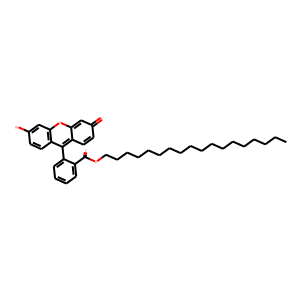| Reference | [1]. Lvova, Larisa, et al.<br />
Detection of alcohols in beverages: An application of porphyrin-based Electronic tongue.<br />
Abstract: According to the World Drink Trends data monitor, a stable growth of alcohol consumption across most of the countries has been registered in the last years. Quality evaluation of alcoholic beverages becomes, hence an important industrial task and fast and inexpensive analyzers are the targets of interest. In a present study we aimed to develop an analytical instrument which may permit a rapid, online control of ethanol content in beverages of various sources in a wide range of concentrations. Potentiometric responses of porphyrin-based solvent polymeric membranes towards several aliphatic monatomic alcohols in single-, two- and four-component solutions were evaluated. Sensitivity of membranes in single-component alcohol solutions decreased in the following order: ethanol > methanol > isobutyl alcohol. A performance of potentiometric porphyrin-based Electronic tongue (ET) for analysis of alcoholic beverages is described. The utility of ET system for an identification of beverages made of two different source materials: grape and barley has been shown. Simultaneously a scale of beverages’ ‘alcoholic degree’ in ethanol concentration units was evolved. The alcoholic strength of several commercial sorts of wine, beers, grappa and whiskey was successfully evaluated according to the evolved scale.<br />
Sensors and Actuators B: Chemical 118.1-2 (2006): 439-447.<br />
<br />
[2]. Imaging inclusion complex formation in starch granules using confocal laser scanning microscopy<br />
Marianna Manca, Albert J. J. Woortman, Katja Loos, Maria A. Loi<br />
Abstract: The tendency of amylose to form inclusion complexes with guest molecules has been an object of wide interest due to its fundamental role in food processing. Here we investigated the features of starch granules from several botanical sources using confocal laser scanning microscopy (CLSM) and uncovered the interactions between amylose and fluorescent lipophilic molecules below gelatinization temperature. In natural starch granules, we reveal complexation of lipophilic molecules labeled with fluorescein with amylose located at the periphery of the granules, appearing as a bright well-defined luminescent rim. This phenomenon is occurring below the gelatinization point for very low concentration of aliphatic chains. Control experiments performed with the fluorescein dye show staining of the whole granule, evidencing non-specific interactions. Similarly, experiments performed with waxy granules show a broader luminescent rim when interacting with the lipid-dye molecules.<br />
16 September 2014 https://doi.org/10.1002/star.201400118<br />
<br />
[3]. Tsutsumi, E., Henares, T.G., Kawamura, K., Yao, T. and Hisamoto, H., 2010.<br />
Facile preparation method of a disposable capillary biosensor using an ion-selective optode membrane and a dissolvable enzyme membrane and its application to urea sensing.<br />
Abstract: A facile preparation method of a disposable capillary biosensor immobilizing a plasticized poly(vinyl chloride) (PVC) membrane ion-selective optode containing a lipophilic pH indicator dye and an ionophore, and a dissolvable poly(ethylene glycol) (PEG) membrane containing an enzyme is developed. The method involves the sequential introduction of membrane cocktail solution followed by air introduction. Repeating this process allowed facile preparation of a capillary biosensor comprised of two layer structure, which can be used for single-step biosensing just by sipping the sample with capillary action. Here a urea biosensor was prepared as a proof-of-concept.<br />
Chemistry letters, 39(5), pp.436-438.<br />
<br />
[4]. Walters, J.D. and Hall, E.A., 2011.<br />
An optrode particle geometry to decrease response time.<br />
Abstract: A hollow 3 μm sensing microcapsule containing chromoionophores within a 100 nm organosilica shell is reported. This shows a response to an ion step two orders of magnitude faster than ‘filled’ sensing particles of similar diameter. Incorporation of chromoionophores ETH 5294 and ETH 7061 in the capsule shell is shown with a t90 response <2 s compared with >15 min for filled particles of similar diameters. This ultrafast geometry is also extended to dual ionophore dye incorporation and preliminary exploration of a FRET-based ratiometric method is examined to extend the pH response range, using a single excitation wavelength.<br />
Analyst, 136(22), pp.4718-4723.<br />
<br />
[5]. Ortuno, J.A., Albero, M.I., Garcı́a, M.S., Sanchez-Pedreno, C., Garcı́a, M.I. and Exposito, R., 2003.<br />
Flow-through bulk optode for the fluorimetric determination of perchlorate.<br />
Abstract: A flow-through fluorescence bulk optode for the flow-injection determination of perchlorate is described. As the active constituents the optode incorporates the lipophilized pH indicator fluorescein octadecyl ester and methyl tridodecyl ammonium chloride, dissolved in a plasticized poly (vinyl) chloride membrane entrapped in a cellulose support. The optode is applied in conjunction with the flow injection technique for perchlorate determination at pH 4.5 (acetic–acetate). The sensor is readily regenerated with the pH 10.4 (TRIS) carrier solution. The analytical characteristics of this optode with respect to perchlorate response time, dynamic measurement range, reproducibility and selectivity are discussed. The proposed FI method is applied to the determination of perchlorate in waters from different sources.<br />
Talanta, 60(2-3), pp.563-569.
|

